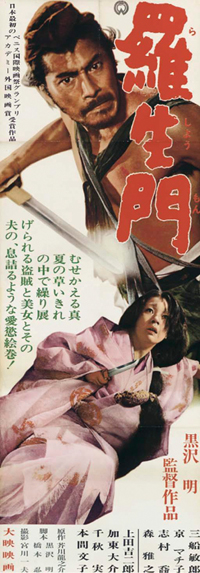 By Andrew Hamlin
By Andrew Hamlin
Northwest Asian Weekly
![]()
![]()
![]()
![]()
If you need me to tell you that there is no answer, as director Akira Kurosawa once said of his masterpiece, “Rashomon,” then I am telling you: There is no answer. Such a question would not come up these days of course; “Rashomon,” first released in 1950 and newly available, became the gateway release to the acceptance of Japanese cinema in the West. It tells a story from four different points of view, involving eight characters in all. And its refusal to resolve, to tell us which story is the truth, broke new cinematic ground.
The story definitely involves a murder — the dead body of a samurai cannot be denied — and, possibly, a rape. We meet a brigand (Kurosawa’s legendary leading man Toshiro Mifune), the samurai’s wife (Machiko Kyo), a woodcutter (Takashi Shimura), and oddly enough, the unfortunate samurai (Masayuki Mori), testifies from beyond the grave, through a medium (Noriko Honma, another of the director’s regulars). The story changes drastically depending on who’s telling it, shifting credit, blame, and motivations. In the end, no definitive conclusion can be drawn, because none of the stories corroborate each other. Japanese audiences overwhelmingly rejected “Rashomon,” driving the always-sensitive director into a depression; but it took home an Oscar, the Golden Lion Award at the Venice International Film Festival, and more. It ends with a man and a baby, and the lifting of the torrential rain, which is Kurosawa’s trademark. A muddy scene of tentative hope. (end)
“In The Mood For Love” is available on Blu-ray from The Criterion Collection. Check your local video store for availability.
Andrew Hamlin can be reached at info@nwasianweekly.com.



